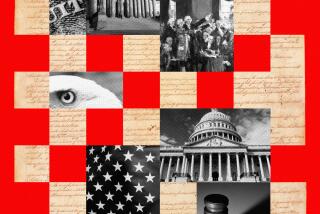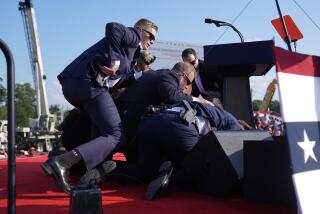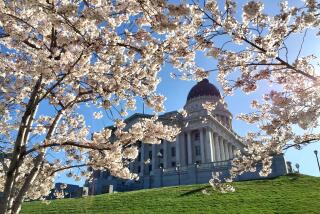Sealing Off the Capitol Would Wound Democracy
- Share via
In the summer of 2000--an age ago--I spent three weeks in Washington, co-directing a summer seminar in constitutional history. Every morning, a colleague and I would walk across the Capitol grounds to the Supreme Court Historical Society, chatting about some issue of constitutional law. We would pass the unsightly concrete planters put across driveways and sidewalks to deter truck bombers, and then the lines of tourists waiting to see Congress. Visitors to the Capitol or those wishing to meet their representatives in congressional office buildings would pass through metal detectors, but once inside could wander freely.
It is easy to imagine that this access will be restricted or suspended in the aftermath of Sept. 11 and the current anthrax scare. Given a choice between catering to tourists and preserving the security of our representatives, we should err on the side of security. In a worst-case scenario, the Capitol might be closed to all but members and staff.
With all the challenges our notion of an open society now faces, this might seem like a minor disruption. Yet it violates the fundamental belief that representatives should be both accountable and accessible to the citizenry. That belief has deep roots in our history.
After 1776, many states moved their capitals from coastal to more centrally located towns to promote equal access to government from every community. A similar logic brought the national capital south to the mosquito-rich marshes along the Potomac River, which George Washington and Thomas Jefferson rashly envisioned as a major thoroughfare into the interior.
Physical access to the capital was important because the routine business of Congress involved dealing with the petitions of constituents and the endless requests of favor-seekers.
Even presidents received casual visits from those seeking government employment. Well into the 19th century, many members of Congress lived in convivial boardinghouses where they could be easily approached, and most members of the House served only one or two terms before heading home for more comfortable accommodations and rewarding work. All that changed during the past century. Congressional incumbency rose, the legislative year grew longer, the burden of legislative activity increased and members acquired hefty staffs. Congressional offices have become adept at mediating the complaints of voters back home, but these complaints are presented at district offices, not hand-delivered to Washington. Members can spend most of their careers in Congress and treat their districts as places to visit away from their real homes in greater Washington.
C-SPAN has probably done more to enlighten Americans to the workings of Congress than any number of visits to the great rotunda.
Yet we should not underestimate the symbolic importance of keeping government as accessible as possible. When the framers of the Constitution discussed the essential nature of representation back in the 1780s, they recognized that its success depended on the confidence people had in their representatives and the sympathy that representatives felt for their constituents. This confidence and sympathy are the great resources on which our democracy relies.
Public opinion polls reveal that Americans feel a renewed appreciation and acceptance for the role of government--a striking contrast to the anti-government rhetoric of the past two decades.
As important as it is to protect members of Congress and their staffs, we also have a stake in maintaining as much access to our great public spaces as possible. To seal Congress off from the people--even from tourists--would risk inflicting a deep wound on our understanding of democracy.
More to Read
Get the L.A. Times Politics newsletter
Deeply reported insights into legislation, politics and policy from Sacramento, Washington and beyond. In your inbox twice per week.
You may occasionally receive promotional content from the Los Angeles Times.










